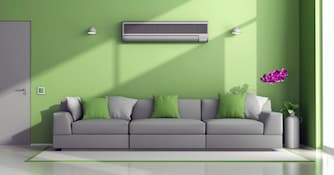
Mobile Home Heating and Cooling
Maintaining a comfortable temperature in a manufactured home can be hard. Too often, homeowners are left sweating in the summer and shivering in the winter because they installed the wrong HVAC unit.
Finding the right mobile and tiny house heating and cooling system can be easy if you keep certain factors in mind. In this guide, we’ll walk you through everything you need to know about shopping for mobile home HVAC systems.
Climate
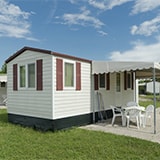 Where you live has a huge impact on what kind of mobile home HVAC system you will need and what size it will need to be. If you live in the deep south, you’ll obviously need fewer BTUs of heating than if you live in Pennsylvania.
Where you live has a huge impact on what kind of mobile home HVAC system you will need and what size it will need to be. If you live in the deep south, you’ll obviously need fewer BTUs of heating than if you live in Pennsylvania.
When building mobile or tiny homes, manufacturers sometimes forget to account for where the home will end up. For example, if the manufacturer is in Tennessee, they might size the home’s HVAC system for Tennessee. This will be a problem if the home is being shipped to North Dakota. Make sure you and your manufacturer are on the same page from the start about the home's heating and cooling needs.
Whether you’re adding HVAC to an existing home or building a new one, make sure it’s sized for your climate to handle temperature extremes.
Space
There’s a big difference between having a little indoor mini split unit hanging on your wall and a large air handler taking up a quarter of the room.
If you own a tiny home, it’s probably, well, tiny. Before buying a large piece of equipment, make sure you know how much space you will be losing.
Your other option is to install the system beneath your home, in which case you save space, but it’s harder to get at for maintenance. It also then becomes a great nesting place for snakes and other critters depending on where you live.
How are Mobile Homes Heated and Cooled?
The type of manufactured home HVAC system you get can largely come down to whether you have existing ductwork.
Homes with Ductwork
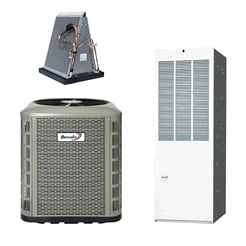 Whether or not your tiny or mobile home contains ductwork will play a major role in which type of HVAC system you choose.
Whether or not your tiny or mobile home contains ductwork will play a major role in which type of HVAC system you choose.
If your home was built using ductwork, then your most affordable option will likely be either a split forced air or packaged system. Since the ductwork is already there, you don’t have to spend the substantial costs to install it.
A split forced air system consists of an indoor air handler and an outdoor condenser. During the cold months, the air handler can double as a furnace if it has a heat exchanger. Otherwise, it works together with the condenser as an air conditioner or heat pump. A packaged system combines the air handler and condenser into one large unit that is installed outside. Many manufactured and tiny homeowners prefer packaged pump systems because they are compact and don’t take up any space inside the home. One downside, again, is that packaged systems are exposed to the elements and can be a refuge for wildlife.
A packaged system combines the air handler and condenser into one large unit that is installed outside. Many manufactured and tiny homeowners prefer packaged pump systems because they are compact and don’t take up any space inside the home. One downside, again, is that packaged systems are exposed to the elements and can be a refuge for wildlife.
If you have limited space inside your manufactured home, a packaged system could be your best bet. If you have plenty of space, a split system offers greater flexibility of installation and simpler maintenance.
Homes Without Ductwork
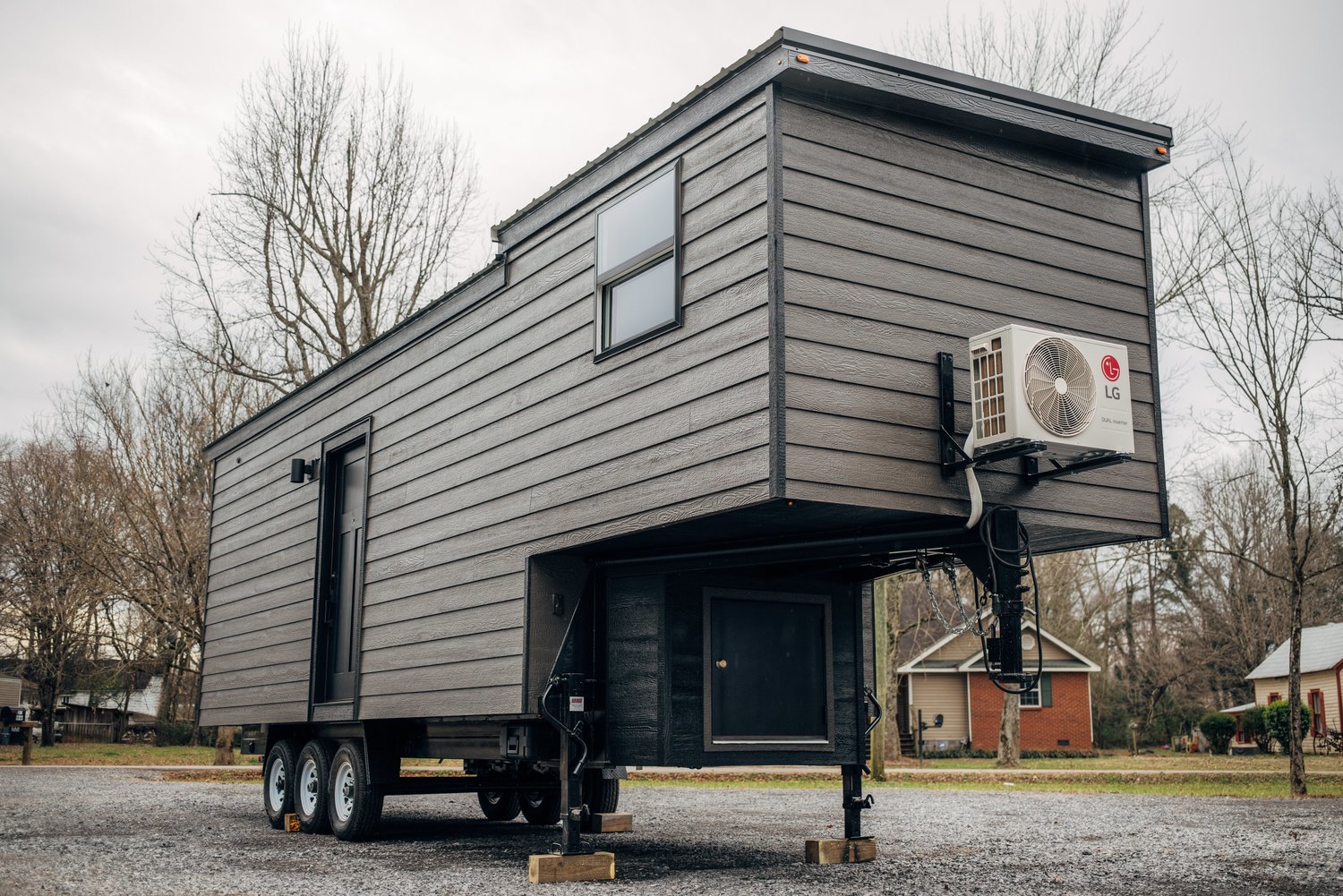 If your home has no ductwork, it can be very expensive to go back and add it. Financially, it makes no sense when you can install a ductless mini split system.
If your home has no ductwork, it can be very expensive to go back and add it. Financially, it makes no sense when you can install a ductless mini split system.
Like a split forced air system, a mini split consists of both an indoor and outdoor unit. However, the indoor unit is much smaller and can be wall-hung, floor-mounted, or even embedded in the ceiling. Most notably, if you have two or more indoor units, you can install them in different rooms and have customized temperatures around your home.
Their versatility, relative ease-of-installation, and efficiency make mini splits ideal cooling and heating options for a manufactured home.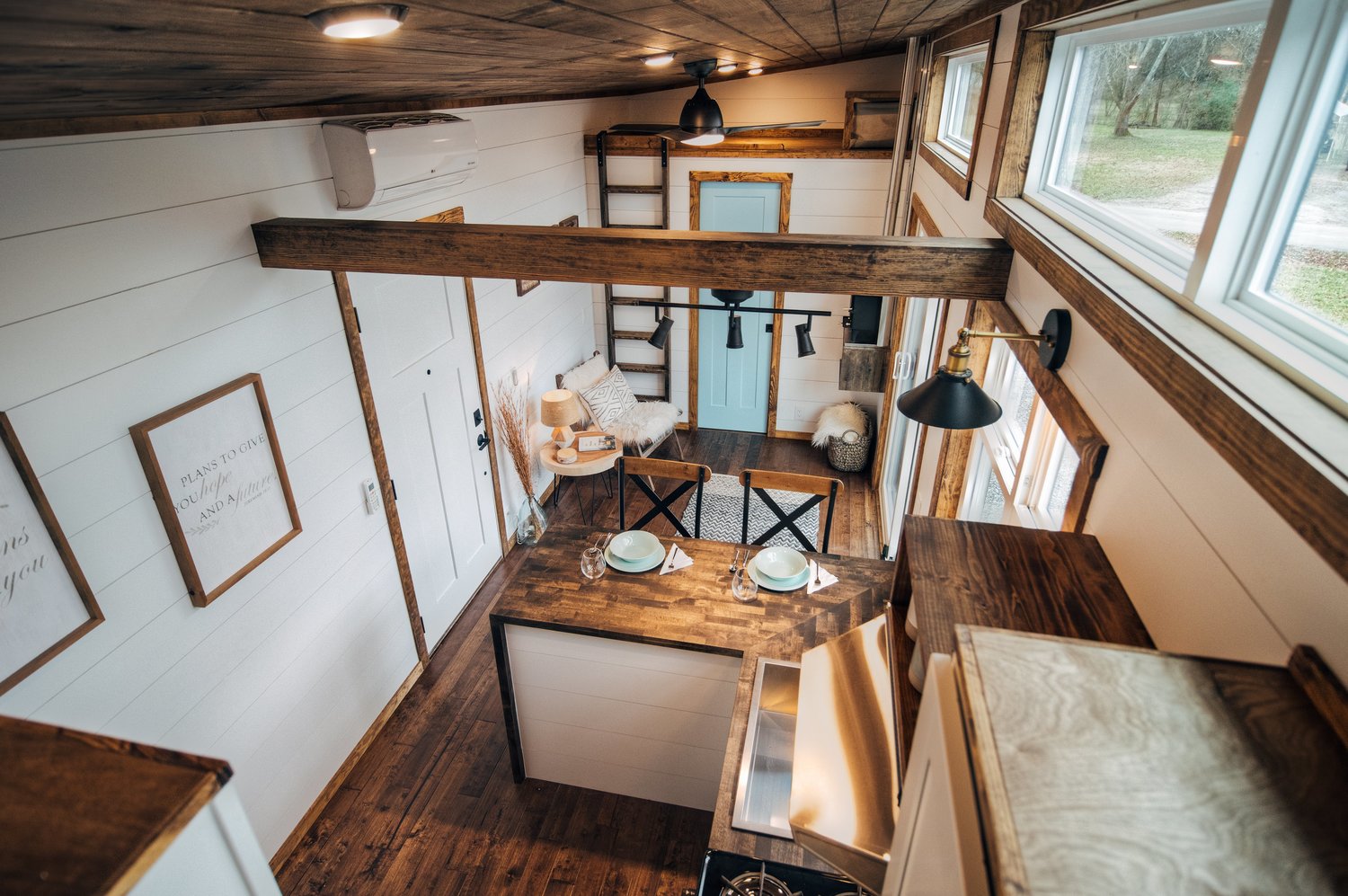 There are a couple of points to consider, though. Although less expensive than installing ductwork from scratch, mini splits may cost more than a traditional split system. Most manufactured and tiny homes are small enough to only need a single zone, however.
There are a couple of points to consider, though. Although less expensive than installing ductwork from scratch, mini splits may cost more than a traditional split system. Most manufactured and tiny homes are small enough to only need a single zone, however.
Finally, if you live in a far northern climate (again taking geography into account), mini splits may not provide efficient heating during winter’s coldest days. You could still use them, but we would recommend a supplemental heat source.
If you think mini splits are for you, we have a mini split sizing calculator to help you get started.
Choosing the Right System
As you can see, there are many aspects to choosing the perfect HVAC system for your mobile or tiny home. Factoring in your climate, indoor space, and whether you have existing ductwork all play a role in determining your best solution.
If you still need help, our U.S-based product experts at eComfort can help you figure out the best HVAC system to keep you comfortable. Call us at (877) 326-3833.





